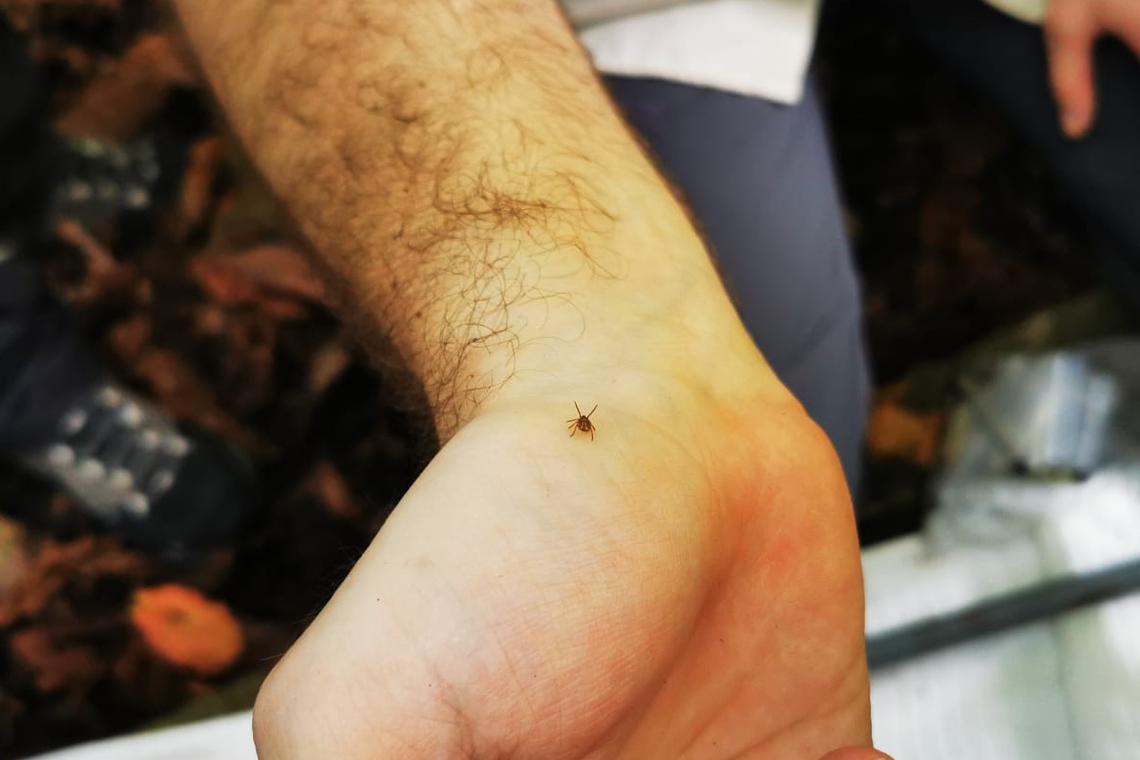
askST: How dangerous are ticks in S’pore for humans, dogs and what should I do if bitten?
SINGAPORE – Sightings of ticks have been on the rise here due to the recent bout of hot and wet weather afflicting Singapore.
The National Parks Board (NParks) on Aug 1 told The Straits Times that the muggy weather likely contributed to
its facility in Tengah for more than 40 animal-related establishments like shelters, breeders and boarders.
With climate change expected to make warmer and stickier conditions the norm, ST explains the science behind the perfect storm for the bead-size parasites and how people can protect their dogs.
Certain species of ticks, including the tropical brown dog tick (Rhipicephalus linnaei), can cause illnesses in dogs and humans.
The tropical brown dog tick, which primarily feeds on dogs, thrives when there are warmer temperatures here.
The rate of a tick’s development is closely linked to changes in weather.
This is because the parasite is unable to internal ly regulate its body temperature, making its developmental rate susceptible to temperature changes.
Dr Ernest Teo, a tick researcher at Hokkaido University’s Faculty of Veterinary Medicine said hotter temperatures can mean that a greater number of life cycles for the tropical brown dog tick will be completed in a year, resulting in more ticks being born.
Greater humidity also aids tick survival, as dry conditions kill the parasite.
“As humidity increases, it prevents the drying up of the eggs, allowing more eggs to hatch successfully, thus increasing the number of ticks in the environment,” said Dr Teo.
The most commonly detected species by the Animal & Veterinary Service (AVS) at The Animal Lodge belongs to the brown dog tick species group , which primarily infests dogs and can transmit pathogens that cause tick fever in canines .
The tropical brown dog tick can carry the tick-borne disease of Ehrlichia canis that causes canine haemorrhagic fever in dogs.
Dr Teo said: “Although E. canis generally does not affect humans, there are rare cases where it can cause disease in humans.”
Elsewhere in the world, its bites are also known to transmit Rocky Mountain spotted fever and anaplasmosis to humans. Both can result in flu-like symptoms, which may turn severe in some cases.
How well a dog recovers depends on several factors like its overall health and the quality of care, said NParks.
Antibiotics are commonly used to treat dogs with tick fever. In severe cases of anaemia, they may require blood transfusions.
Dogs recovering from certain tick-borne infections can carry disease-causing agents without showing symptoms. These dogs are at risk of future relapses and can contribute to the spread of diseases.
NParks advises that the tick be removed as soon as possible. This can be done safely by wearing gloves.
First, fill a small jar with half a cup of rubbing alcohol. Make sure the alcohol is deep enough to submerge the tick.
Then use a pair of fine-tipped tweezers, forceps or a specialised tick removal tool to grab the parasite’s mouth as close to the skin as possible.
Steadily lift the tick from the skin.
Avoid squeezing its body or twisting it, otherwise, any regurgitated guts or broken parts from the tick’s mouth left behind in the dog’s skin may cause infection.
Drop the tick into the jar of alcohol to kill it.
Clean the site of the bite with a cotton swab soaked in alcohol, followed by soap and water.
Dispose of the dead tick and used alcohol properly by flushing them down the toilet.
As the incubation period for tick fever is between five and 14 days, observe your dog carefully for the next one to two weeks to see if it displays any symptoms of tick fever.
These symptoms are pale or greyish white gums and mucous membrane; yellow eyes; nosebleed ; vomiting; loss of appetite; panting; fever; and fatigue or weakness .
You should also look out for orange or dark brown urine; diarrhoea; stiffness in multiple joints; bruising easily; and enlarged lymph nodes.
If your dog shows any of these symptoms, take it to a veterinarian immediately.
NParks said some dogs can harbour the disease for a long time before showing symptoms.
Ticks do not lay eggs on their host.
Female ticks will typically lay their eggs on the ground, in leaf litter, or in other sheltered areas where the eggs can develop and hatch into larvae.
Tick control should be implemented consistently for both the dog and its environment through the use of repellents, which are also useful for other external parasites such as fleas and lice.
People can shield themselves by wearing protective gear when they visit places with high wildlife traffic and leaf litter, or other humid, sheltered spots.
They should regularly look for ticks and keep to designated paths.
……Read full article on The Straits Times - Singapore
Singapore Animals
Comments
Leave a comment in Nestia App